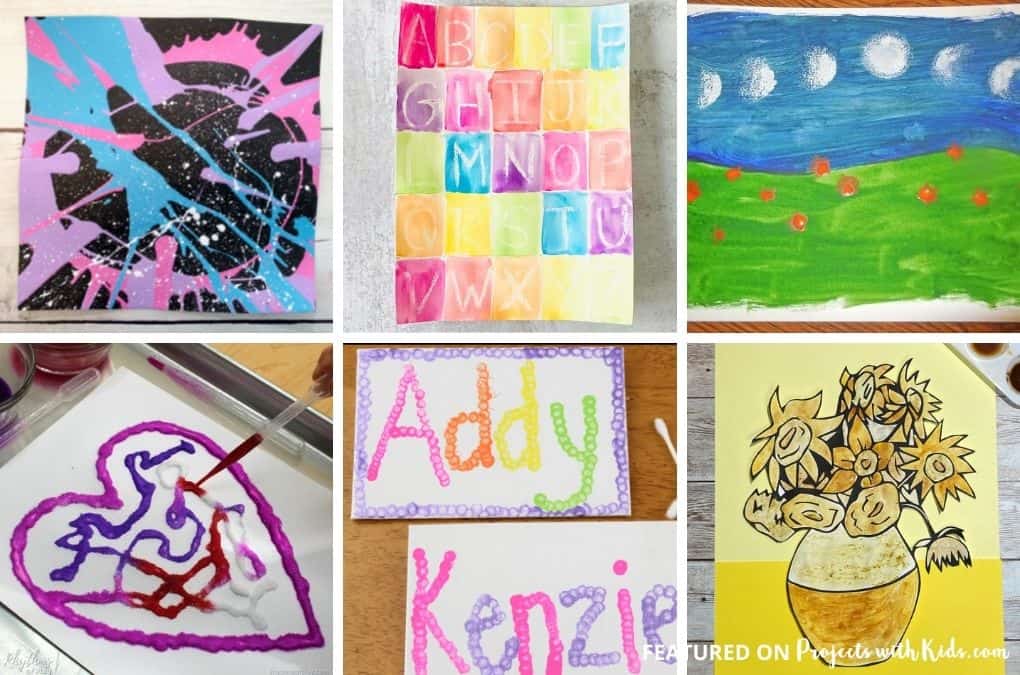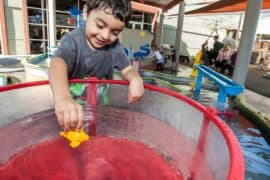Get Ready to Paint a Rainbow of Memories with Your Little Artist
Hey there, awesome parents and guardians! Are you ready to dive into a world of color, imagination, and a whole lot of fun? Painting projects aren’t just a fantastic way to engage your preschoolers’ creativity; they’re also brilliant for their development. So, grab your smocks, because we’re about to get artsy!
Why Painting is Perfect for Preschoolers
Before we get our hands — quite literally — into the paint, let’s chat about why painting is such a stellar activity for those tiny tots. Painting fuels the imagination, refines motor skills, and can even be a calming activity that gives kids a break from the hustle and bustle of their energetic lives. It’s a versatile activity that can be tailored to any skill level, making it ideal for preschoolers of all stripes!
Setting Up Your Little One’s Painting Space
The key to a successful painting session is all in the setup. Let’s make sure we have an area that’s not only inspiring for your child, but also easy to clean for you. Here’s what you’ll need:
- A clear work area, like a plastic tablecloth or a wipeable mat
- Non-toxic, washable paints that are safe for young children
- A variety of painting tools — brushes, sponges, stamps, and even fingers!
- Plenty of paper or canvases to capture those masterpieces
- Smocks or old t-shirts to protect your little one’s clothes
- A rinse cup and towels for quick cleanups
With a well-prepared area, your little one is free to explore and express without the worry of a big mess afterwards. Now, that’s what we call a win-win!
Project Ideas to Spark That Preschool Creativity
Alrighty, it’s time to get to the heart of the matter — the painting projects! These ideas are tried and tested for maximum fun and creativity:
Finger Painting Fun
The simplicity of finger painting makes it a perfect start. It’s all about exploring texture and color with those cute little digits, and there’s no need for brushes. Use bolder colors so they stand out, and guide your child through the process of mixing colors to see what new shades they can create.
Nature Meets Artwork
Take your budding artist outside and have them pick leaves, flowers, or twigs. Back at the painting station, they can dip these natural brushes into paint and press them against paper for a unique artwork that merges nature with creativity. This not only teaches them about the environment but also about texture and patterns.
Paint by Music
Connect art with melody by playing different types of music while they paint. Classical tunes might inspire more fluid lines, while rock could lead to bold, energetic strokes. Discuss how the music makes them feel and see how it influences their painting style — it’s a fantastic sensory activity!
There’s no denying the joy that painting brings to children and adults alike. It’s through these playful projects that your child learns, explores, and opens up a whole world of expressive possibilities. So what are you waiting for? Let the colors fly and the giggles run free as you make some beautiful memories with your preschool Picasso!
Stay tuned as we take a deeper dive into more specific painting activities, techniques to enhance fine motor skills, and creative ways to display your child’s artwork in our comprehensive guide to painting projects for preschoolers!

5 Essential Tips for Preparing for Painting Projects with Preschoolers
Before you embark on this artistic journey, there are a few important things to keep in mind to ensure a smooth, joy-filled painting experience for you and your mini Monet.
1. Embrace the Mess – Plan for Cleanup
First things first – painting with preschoolers is bound to get messy, and that’s part of the fun! Embrace it. Lay down newspapers, drop cloths, or a plastic sheet under the work area. Keep wipes and paper towels within arm’s reach for spills, and have a designated wash area for your child to clean up when finished.
2. Safety is the New Cool
Select paints that are labeled non-toxic and suitable for children. Ensuring the products you choose are safe for your child’s use will give you peace of mind as they unleash their inner artist. Always supervise your little ones during these activities to keep them safe and guide them as needed.
3. Dress for the Occasion
Protect your preschooler’s clothing by using smocks, aprons, or old shirts because creativity can get wild! It’s also a good idea for you to wear something you don’t mind getting a dab of paint on – because let’s face it, paint travels beyond the canvas when kids are involved!
4. Keeping it Age-Appropriate
Choose paint brushes and tools that are chunky and easy to grip for little hands. The size and the weight of the tools should be manageable for your child. Remember, the goal is to make painting enjoyable and developmentally beneficial, not frustrating.
5. Patience is a Virtue
As adults, we sometimes have a specific vision in mind, but preschoolers see the world differently. If they want to paint the sky green or the grass blue, go with it. Allow them to experiment and explore without restrictions. Your patience and encouragement may foster a toddler’s unique artistic vision.
Whether it’s a rainy day activity, a playdate project, or just a spur-of-the-moment art session, these tips will ensure that you are well-prepared. The key is to make painting a stress-free, expressive, and educational activity. So stock up on supplies, don your painting clothes, and get ready to fill your day with color!
Don’t forget to document this beautiful experience. Snapshots of your preschooler in action and their finished artwork can become treasured keepsakes. Not to mention, displaying their creations around the house will definitely boost their confidence. Be prepared for a gallery’s worth of proud moments!
By following these tips, you’re setting the stage for a fantastic painting adventure. Embrace this time with your child; it is a wondrous phase of discovery and expression. Happy painting!
See more great Things to Do with Kids in New Zealand here. For more information see here
Disclaimer
The articles available via our website provide general information only and we strongly urge readers to exercise caution and conduct their own thorough research and fact-checking. The information presented should not be taken as absolute truth, and, to the maximum extent permitted by law, we will not be held liable for any inaccuracies or errors in the content. It is essential for individuals to independently verify and validate the information before making any decisions or taking any actions based on the articles.




